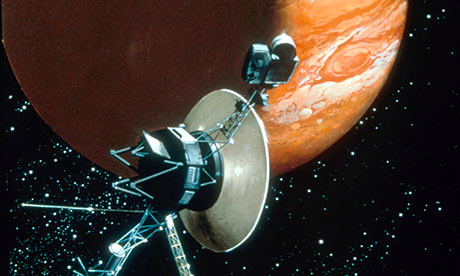From the NY Times:
<nyt_text>
Amar G. Bose, the visionary engineer, inventor and billionaire entrepreneur whose namesake company, the Bose Corporation, became synonymous with high-quality audio systems and speakers for home users, auditoriums and automobiles, died on Friday at his home in Wayland, Mass. He was 83.
His death was confirmed by his son, Dr. Vanu G. Bose.
As founder and chairman of the privately held company, Dr. Bose focused relentlessly on acoustic engineering innovation. His speakers, though expensive, earned a reputation for bringing concert-hall-quality audio into the home.
And by refusing to offer stock to the public, Dr. Bose was able to pursue risky long-term research, such as noise-canceling headphones and an innovative suspension system for cars, without the pressures of quarterly earnings announcements.
In a 2004 interview in Popular Science magazine, he said: “I would have been fired a hundred times at a company run by M.B.A.’s. But I never went into business to make money. I went into business so that I could do interesting things that hadn’t been done before.”
A perfectionist and a devotee of classical music, Dr. Bose was disappointed by the inferior sound of a high-priced stereo system he purchased when he was an M.I.T. engineering student in the 1950s. His interest in acoustic engineering piqued, he realized that 80 percent of the sound experienced in a concert hall was indirect, meaning that it bounced off walls and ceilings before reaching the audience.
This realization, using basic concepts of physics, formed the basis of his research. In the early 1960s, Dr. Bose invented a new type of stereo speaker based on psychoacoustics, the study of sound perception. His design incorporated multiple small speakers aimed at the surrounding walls, rather than directly at the listener, to reflect the sound and, in essence, recreate the larger sound heard in concert halls. In 1964, at the urging of his mentor and adviser at M.I.T., Dr. Y. W. Lee, he founded his company to pursue long-term research in acoustics. The Bose Corporation initially pursued military contracts, but Dr. Bose’s vision was to produce a new generation of stereo speakers.
Though his first speakers fell short of expectations, Dr. Bose kept at it. In 1968, he introduced the Bose 901 Direct/Reflecting speaker system, which became a best seller for more than 25 years and firmly entrenched Bose, based in Framingham, Mass., as a leader in a highly competitive audio components marketplace. Unlike conventional loudspeakers, which radiated sound only forward, the 901s used a blend of direct and reflected sound.
Later inventions included the popular Bose Wave radio and the Bose noise-canceling headphones, which were so effective they were adopted by the military and commercial pilots.
A Bose software program enabled acoustic engineers to simulate the sound from any seat in a large hall, even before the site was built. The system was used to create sound systems for such diverse spaces as Staples Center in Los Angeles, the Sistine Chapel and the Masjid al-Haram, the grand mosque in Mecca.
In 1982, some of the world’s top automakers, including Mercedes and Porsche, began to install Bose audio systems in their vehicles, and the brand remains a favorite in that market segment.
Dr. Bose’s devotion to research was matched by his passion for teaching. Having earned his bachelor’s, master’s and doctorate degrees in electrical engineering at the Massachusetts Institute of Technology in the 1950s, Dr. Bose returned from a Fulbright scholarship at the National Physical Laboratory in New Delhi and joined the M.I.T. faculty in 1956.
He taught there for more than 45 years, and in 2011, donated a majority of his company’s shares to the school. The gift provides M.I.T. with annual cash dividends. M.I.T. cannot sell the shares and does not participate in the company’s management.
Dr. Bose made a lasting impression in the classroom as well as in his company. His popular course on acoustics was as much about life as about electronics, said Alan V. Oppenheim, an M.I.T. engineering professor and a longtime colleague.
“He talked not only about acoustics but about philosophy, personal behavior, what is important in life. He was somebody with extraordinary standards,” Professor Oppenheim said.
Dr. William R. Brody, head of the Salk Institute in the La Jolla neighborhood of San Diego, was a student in Dr. Bose’s class in 1962. He told Popular Science: “His class gave me the courage to tackle high-risk problems and equipped me with the problem-solving skills I needed to be successful in several careers. Amar Bose taught me how to think.”
Amar Gopal Bose was born on Nov. 2, 1929, in Philadelphia. His father, Noni Gopal Bose, was a Bengali freedom fighter who was studying physics at Calcutta University when he was arrested and imprisoned for his opposition to British rule in India. He escaped and fled to the United States in 1920, where he married an American schoolteacher.
At age 13, Dr. Bose began repairing radio sets for pocket money for repair shops in Philadelphia. During World War II, when his father’s import business struggled, Dr. Bose’s electronics repairs helped support the family. After graduating from high school, Dr. Bose was admitted to M.I.T. in 1947, where he studied under the mathematician Norbert Weiner, along with Dr. Lee.
An avid badminton player and swimmer, Dr. Bose spent several weeks each year at his vacation home in Hawaii.
Dr. Bose and his ex-wife, Prema, had two children, Vanu, now the head of his own company, Vanu Inc. in Cambridge, Mass., and Maya Bose, who survive him, as does his second wife, Ursula, and one grandchild.











